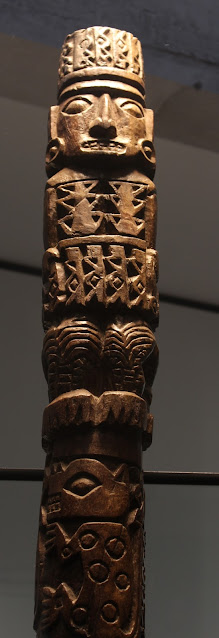The myth of Pacha Kamaq or Pachacámac
The myth of Pacha Kamaq or Pachacámac
(this myths has never been properly translated)
Pacha Kamaq (Quechua, "Creator of the World"; also Pacha Camac, Pachacamac, and Pacharurac) in Inca mythology, is a creator god, the embodiment of Huiracocha, as a god he was originally venerated on the central coast of the Inca Empire. Considered "the creator" in the Lima, Chancay, Ichma, Huari, and Chincha cultures, especially worshiped in the city of Pachacamac (Lima, Peru) by the Ichma people, a group of pre-Inca indigenous polity later absorbed by the Inca Empire.
The first myth related to Pacha Kamaq is the following:
It is said that Manco Cápac is with his three brothers, all of them, children of the Sun: Pachacamac, an ancestral (ancient) divinity who was later incorporated into the official Inca cult, and who was worshiped since ancient times by the peoples of the coast; Viracocha, and another nameless god.
The first of these brothers is, precisely, Pachacamac, who when he went out to the [che | world]] climbed to the highest peak, to throw the four stones at the four cardinal points, thus taking possession of everything that encompassed his sight and reached for their stones. After him came another brother, who also ascended to the top by order of the minor, the astute and ambitious Manco Cápac, who took advantage of his confidence to throw him into the void and seize power, after having previously locked Pachacamac in a cave and having seen how the third, the god Viracocha, preferred to leave him alone, abandoning his terrible brothers and abhorring his actions to selfishly seize power.
But there are other stories in which, precisely, it is the ancient god Pachakámaq who acts as the protagonist in caring for humans.
His great was the appearance of the first Inca and the first Coya, great was also his cult. They were worshiped in the multitude of solar temples in all corners of the Inca Empire, in a place of the saints very close to the great Sun-god or Inti. Of all the religious sites dedicated to this great Inca god, whether it was temples, oratories, pyramids, or natural sacred places, the one that led them, by rank and by its greatness, was the great sanctuary of Inti-Huasi del Cusco, a rich temple also called Coricancha, or gold room, since its walls were covered with sheets of that metal, for the greater glory of the Inca and the gods from whom he came.
The central image of the Coricancha was the great solar disk, the orthodox and ritual image of the sun god, and around it were the other chapels of the lesser divinities of the sky. After the Coricancha, due to its splendor and importance, the temple dedicated by the Chinchas to Pachacamac is located in Pachacamac, near Lima.
It should be noted that the Chincha culture had its supreme being in Chincha Cámac since they worshiped the god Pachacamac (more out of fear than out of respect or love), and they dedicated temples and huacas to him as an act of gratitude for his creative work and They dedicated offerings made by them or selected from among their fruits, for being the savior of their ancestors whom he freed from the initial hunger, they were also sure that this powerful and fearsome god, due to his special personality, could not be the one to whom they came in search of solutions to their troubles and regrets.
In the Great Temple of Pachacamac, near Lima, a sanctuary was erected for the worship of the god without skin or bones, as Pachacamac was described by its faithful, the Incas - after assimilating this god and his cult to that of the Sun - carried out works of embellishment, to make it almost as beautiful as Coricancha, also covering with gold and silver the central chapel, that of the god Pachacamac, in the manner of what was previously done with the entire great solar temple of Cusco.
Another myth associated with Pacha Kamaq tells:
Pacha Kamaq was responsible for creating the first man and woman, but he forgot to give them food, and in just a few days the man died. The woman (who for some reason survives) cursed Pacha Kamaq, accusing him of neglect, and Pacha Kamaq made her fertile to not be alone.
Later Pacha Kamaq killed the first woman's son and cut the corpse into pieces, each of which became a separate fruit or vegetable plant. The woman's second son, Wichama, escaped, so Pacha Kamaq killed the woman. Wichama sought revenge and drove Pacha Kamaq into the ocean.
The nation of Tahuantinsuyu adopted the worship of Pacha Kamaq when they incorporated the Ichma into their empire. In late Inca mythology he was the father of Inti and Mama Killa, and husband of Mama Pacha. The Wari, the Pachacamac empire, Chancay, Chimor, and Ichma possessed the city of Pachacamac at some point.
Sources:
- López Austin y Luis Millones, Dioses del norte, dioses del sur, 2008.
- Pozzi-Escot, Denise et al, Pachacamac/ El oráculo en el horizonte marino del sol poniente, 2017.
- Maria Rostworowski: Estructuras andinas del poder / Ideología religiosa y política, 1988.
- Waldemar Espinoza Soriano: Los incas / Economía, sociedad y estado en la era del Tahuantinsuyo, 1987.



Comments
Post a Comment